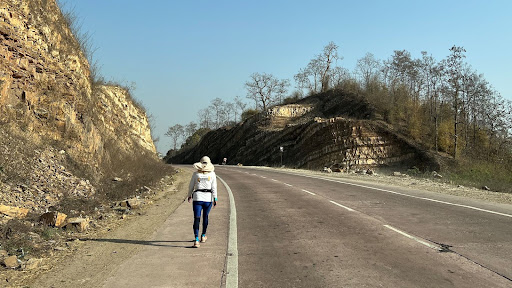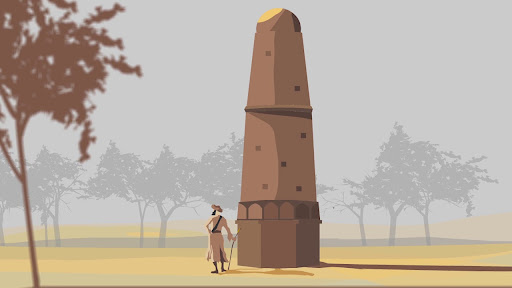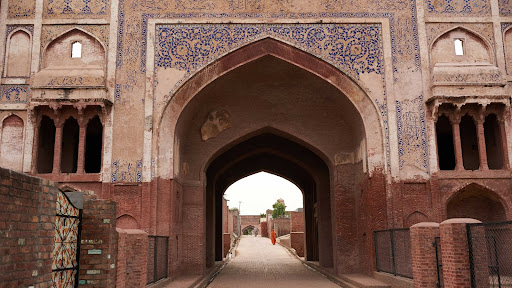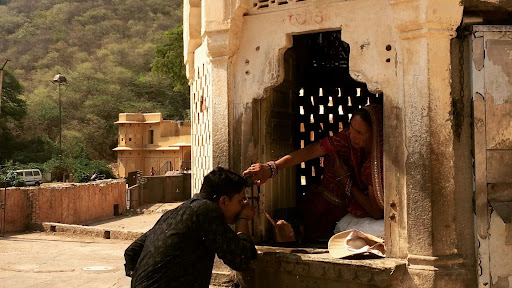A Little Detour to Find the Lost Inns
By Radhika Agarwal
Planning for ‘Walk for Arcause’ with the team has sparked a curiosity in me to know what it is like to be an explorer. As my mind wanders unrestrained by the time-continuum and the four walls that create boundaries, I walk alongside Paul Salopek on his decade-long experiment in slow Journalism, with Mahatma Gandhi at Dandi, and run across American History with the fictitious Forrest Gump. And I imagine walking with Ar. Gita Balakrishnan on her 1700 km long odyssey to raise awareness on the role good design can play in changing lives and Nation Building. As we experience the journey through her, I am made aware of the agony and the many hurdles that she and other travelers strive to overcome on the highroads today. As today’s highways focus on plying locomotives, pedestrians yearn for a place to sit down, catch a breath and re-energise for the journey that lies ahead. Looking back, one can observe the trail left behind by the ancient travelers. Much like the unexplored meandering roads of this great land, stretched along the ‘Uttarapatha’ these traces appear in the form of Sarais and Kos-Minars. These retreats act as a small oasis in an otherwise arduous journey. I wonder if moments like these inspired them to build sarais on the way?

The ancient journeys would have been strenuous if not for these Caravan-Sarais. Sarais are ancient way-side inns built to slow down and relax. They also serve as hubs for the exchange of goods, ideas and culture. Known by various names in different parts of the world, the Sarais provide protection against bandits and extreme weather conditions. Commonly known as the Musafir-khana and Sarai in India, Taverns and Inns in Europe, Relay House in China, Coffee House in America, Cabarets in France etc. Often built outside a town, massive gateways resembling those of a fort, the design of these Sarais reflect their protective purpose. The ‘Kos-minar’ stands for ‘kos’ meaning approximately 3 km and ‘minar’ meaning a pillar. They are the glorified highway distance markers roughly about 15-20 ft tall.

Credits : Mubaishir Munir
During the early 13th century one can find references to Sarais being built in India. Mughals were just not rulers, they were also builders and architects of medieval India. With the establishment of minor trading routes, Sarais were built mostly along the Grand Trunk Road. Sher Shah Suri commissioned as many as 1700 Sarais along the route! The British modernized these medieval structures and largely built them for military use and later they went on to be used for the public and are comparable to the modern day inns. Despite numerous attempts to upgrade the highways, the roads start to reveal their secrets and some structures can be spotted frozen in time with traces of their former glory. The Delhi-Agra corridor boasts of many such Sarais and establishes the significance of these medieval structures in pre-modern consciousness. These living Sarais served multiple purposes thereby shaping our present in a multi-faceted manner. The Azam Khan Sarai in Ahmedabad is one such example. It was used as a resting place for travelers in the Mughal era, as a hospital and also as a jail during British rule!

Source: punjabtourism.punjab.gov.in/
Development along the routes not only has a great social and economic impact on human settlements but it also allows the voyager to indulge in activities enroute. However, today as one moves forward, they come across products of rampant construction and nondescript heritage. Nurmahal is one such example which is imbued in history but its precinct has been white washed by local authorities in an attempt to modernize the surroundings. Even if the site is restored to its original character and form, it will remain a ruin, frozen in time, losing its significance over years of neglect. Likewise is the scenario of heritage churches on NH7, heritage structures along the famous dandi route. While Kos-minars often lie abandoned or even pulled down as the roads are widened, the rapid development of railroads and lesser travel time means that these medieval inns and comfort detours, water-huts are fast disappearing.

Credits: Heritage Water Walks, Jaipur
Conserving Sarais is important to provide a safe retreat for the traveler and also because everything surrounding it gains a heritage and functional value. For instance, the Community in Darma Valley, Uttarakhand is celebrating the heritage of their ancestors and over 100 Sarais have been marked for conservation. This is a small part of the butterfly effect we are trying to achieve through zero carbon development. One can easily notice the dilapidated state of these structures, by comparing the present situation with historical maps. Hence, the need of the hour is to work towards the preservation of these living Sarais and plant trees to mitigate the heat-island effect. This is a tale that echoes with respect to several Indian Heritage structures. Thus it becomes important that we work our best towards preserving such gems of Indian art and culture. As small beginnings can have great endings. Let us take a pause to reflect and share our experiences. Do you know of any such stories of caravan sarais?
Radhika Agarwal is a final year architecture student from MITS, Gwalior and an Ethos Catalyst. For her, architecture is a tool to bring her ideas to life and writing inspires her to bring about a change with those ideas. Her favorite word is ‘Why?’
